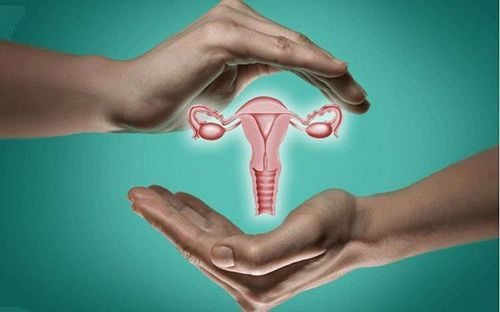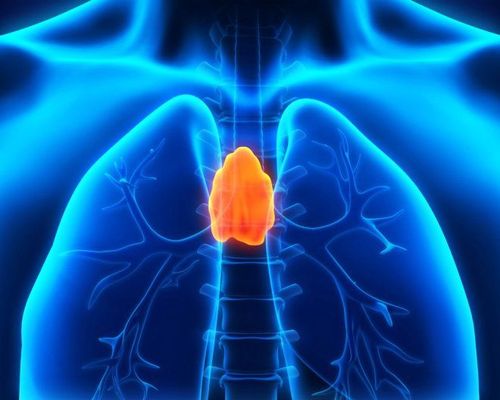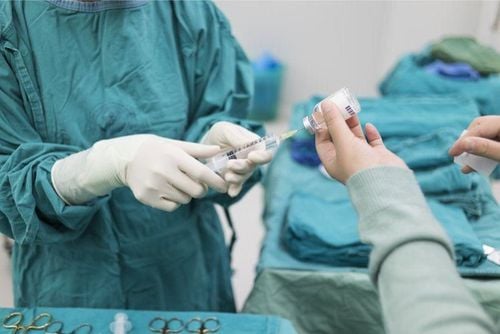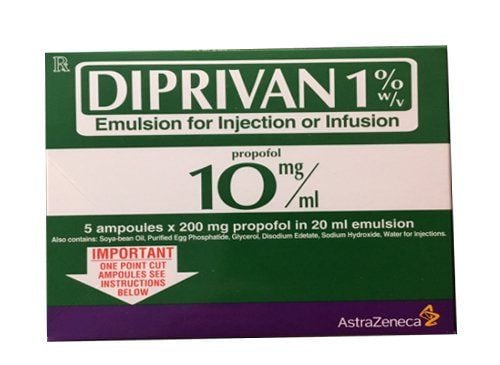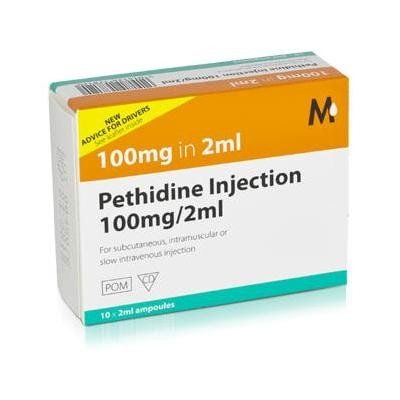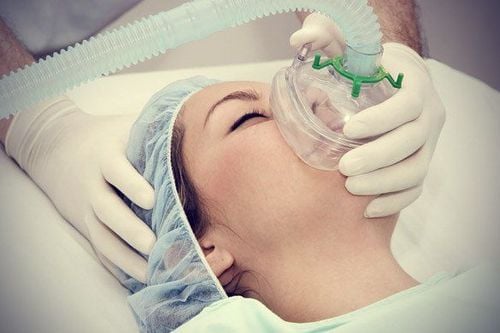This is an automatically translated article.
The article was professionally consulted by Specialist Doctor II Nguyen Binh - Department of General Surgery - Vinmec Ha Long International Hospital. Doctor Nguyen Binh has more than 20 years of experience in the field of anesthesia and resuscitation.Endotracheal anesthesia is the appropriate procedure for laparoscopic liver resection. Because this procedure provides good respiratory control, the anesthetic time is prolonged, and the effect is particularly rapid and deeper than with other types of inhalation anesthesia.
1. What is endotracheal anesthesia?
Endotracheal anesthesia is a technique of general anesthesia with endotracheal intubation, used to control the patient's breathing during and after surgery.After being anesthetized, the patient will temporarily lose sensation and consciousness but still maintain breathing by mechanical ventilation through the endotracheal tube. The method of endotracheal anesthesia is applied in liver resection surgery and many other complex and prolonged surgeries in the body.
2. Indications and contraindications for endotracheal anesthesia in laparoscopic hepatectomy
Indications: Laparoscopic central hepatectomy Contraindications: Endotracheal anesthesia is not performed when the patient does not sign a written commitment to liver resection, has insufficient means of anesthesia and resuscitation, and the anesthesiologist passionate and unskilled.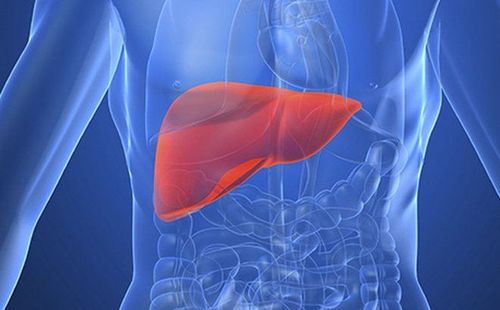
3. What to prepare before anesthesia for laparoscopic liver resection?
3.1 The person performing the technique
Doctors, nurses specializing in anesthesiology - resuscitation3.2 Anesthesia equipment
Anesthesia machine system, life function monitor, defibrillator, viscosuction machine. Laryngoscope, endotracheal tube of different sizes, suction tube, mask, squeeze balloon, oropharyngeal cannula, Magill pliers, soft mandrin. Lidocaine 10% and Salbutamol spray Prophylaxis of difficult intubation by preparing the following additional equipment: Cook tube, laryngeal mask, flexible bronchoscope, tracheostomy kit, mouth opener.3.3 Prepare the patient
Examining the patient's health status before endotracheal anesthesia Explain the anesthetic and surgical procedure for patient's peace of mind and cooperation Assess the level of difficulty in intubation Use sedation the night before surgery (if needed)4. Anesthesia procedure for laparoscopic liver resection
4.1 General steps
Place patient in supine position. Give 100% oxygen 3-6 liters/minute before induction of anesthesia at least 5 minutes. Install a monitor Set up an intravenous line Pre-anesthesia (if needed)4.2 Induction of anesthesia
Intravenous anesthetics: propofol, etomidate, ketamine... Painkillers: fentanyl, sufentanil ... Muscle relaxants: succinylcholine, rocuronium ....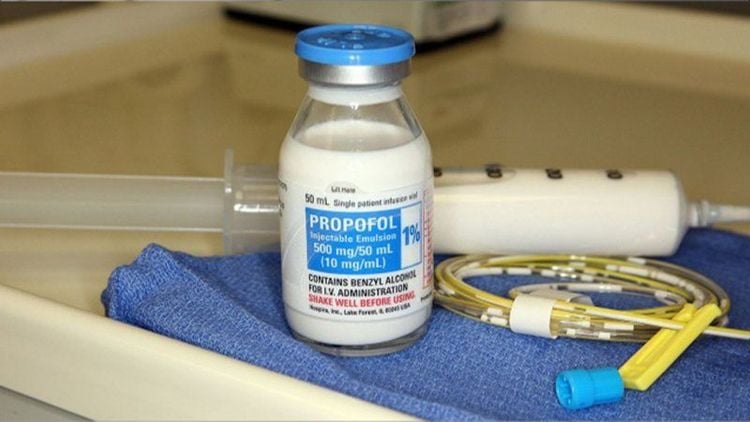
4.3 Intubation
Oral intubationOpen the mouth, place the laryngoscope on the right side of the mouth, move the tongue to the left, push the lamp deep, coordinate with the right hand to press the cricoid cartilage to find the epiglottis and glottis. Pass the endotracheal tube through the glottis, stopping propulsion when the balloon of the endotracheal tube passes through the vocal cords 2 - 3 cm. Remove the laryngoscope, then inflate the endotracheal balloon to fix. Check that the endotracheal tube is in place correctly by listening to the lungs and checking for EtCO2. Fix the outside with adhesive tape. Place the cannula in the mouth to prevent the patient from biting the endotracheal tube (if necessary).
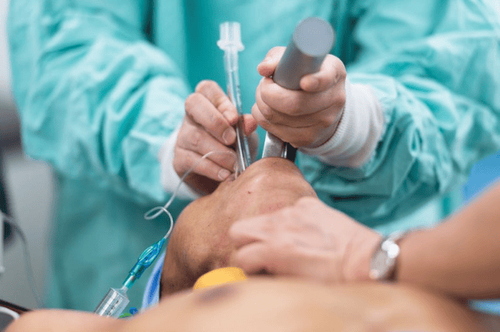
4.4 Maintenance of anesthesia
Maintain anesthesia with intravenous or volatile anesthetics, analgesics and muscle relaxants (if necessary) Mechanical respiratory control5. Complications and treatment
5.1 Reflux of gastric juice into the airway
Recognizing signs: There is digestive juices in the oral cavity and airways. Treatment: Drain the fluid, put the patient's head down, tilt the head to one side. After surgery, it is necessary to monitor the risk of lung infections5.2 Hemodynamic disorders
Recognizing signs: Lower or increased blood pressure, arrhythmia (bradycardia, tachycardia, arrhythmia) Treatment: Depending on the symptoms and causes, there are different treatments.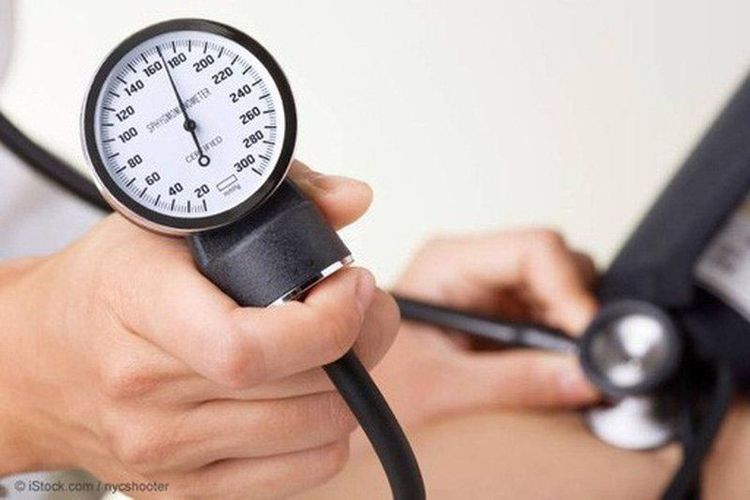
5.3 Complications due to intubation
Unable to intubate: Perform the procedure of intubation for difficult cases or switch to another method. Misplaced in the stomach: The telltale sign is auscultation of the lungs without alveolar murmurs, no measurement of EtCO2. Resolved by reintubation. Vocal - tracheobronchial spasms : The telltale signs are difficulty or inability to ventilate, auscultation of the lungs with rales or muted lungs. The solution is to provide adequate oxygen, sleeping pills, muscle relaxants, bronchodilators and corticosteroids. If still not effective, switch to apply endotracheal intubation for difficult cases. Trauma when intubation: Manifestations are bleeding, tooth fracture, vocal cord damage, foreign object falling into the airway. Depending on the damage suffered, there are different treatments.5.4 Respiratory complications
Manifestations: Bend, retract, push the endotracheal tube deep into one lung; drop, open respiratory system; out of oxygen supply; soda is not effective leading to lack of oxygen. Treatment: Ensure ventilation, provide 100% oxygen, find and resolve the cause.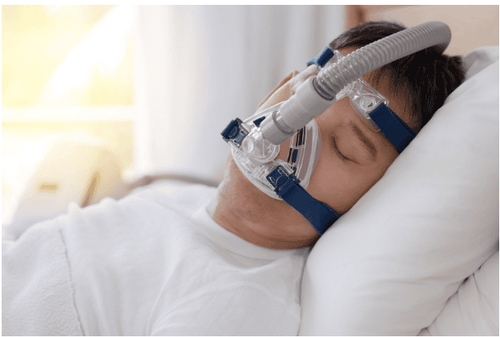
5.5 Complications after extubation
Manifestations: Patient has sore throat, hoarseness, laryngospasm - tracheobronchitis, upper respiratory tract inflammation, laryngotracheal stenosis after extubation Solution: Treatment depends on symptoms and the cause to the illness. Endotracheal anesthesia is indicated for laparoscopic liver resection and many other surgeries. Accordingly, patients need to coordinate with doctors and anesthesia technicians to minimize possible complications.Endotracheal anesthesia is a routine anesthetic technique performed at Vinmec International General Hospital. Accordingly, the procedure of endotracheal anesthesia at Vinmec is carried out methodically and in accordance with standard procedures by a team of highly skilled doctors and modern machinery. As a result, complications after anesthesia and surgery are always minimized to the maximum extent.
In April & May 2021, when there is a need for liver cancer examination and treatment at Vinmec Central Park International General Hospital, customers will enjoy dual incentives:
- Free specialist examination and free of charge Fees for tests and scans
-Reduce 50% of costs for customers who have a prescription for post-examination treatment. The program is limited to the corresponding technique of each hospital and to customers who perform this treatment technique for the first time at Vinmec.
Please dial HOTLINE for more information or register for an appointment HERE. Download MyVinmec app to make appointments faster and to manage your bookings easily.





